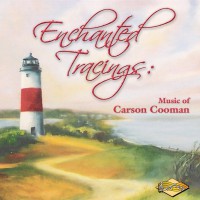Opus 735
Oboe Quartet (2007)
for Oboe and String Trio
Duration: 16 min.
Dedication: for Louis Karchin
Commission: Commissioned with support from Richard Mason
 Recorded on Enchanted Tracings: Music of Carson Cooman (2009)
Recorded on Enchanted Tracings: Music of Carson Cooman (2009)Publisher: Musik Fabrik
Performance materials available from the publisher.
The oboe quartet genre tends to inspire two different kinds of works: in one type, the pieces are conceived as “mini-oboe concerti” with the oboe defined as a clear solo voice over the backing of the string trio; in the other type of work, the oboe is the “first among equals” in an integrated chamber music discourse. This work falls into the latter category. In the recent years, wonderful oboe quartets from Yehudi Wyner (1999), Elliott Carter (2001), and Fred Lerdahl (2002) have continued to define an American voice in this genre.
This work is cast in a single movement, controlled by a loose variation form with the intent of creating a single musical “line” and narrative. From the beginning to the end, there is continuous melodic and harmonic development, working towards creating a structure which, though tightly controlled, is also somewhat improvisatory in spirit. The music can be grouped broadly into three sections, each of which is a large-scale variation and each also containing a number of overlapping smaller variations.
The opening, with its nervous cascades of pizzicato strings, is marked “tumbling wildly, with restless energy.” Switching to bowed playing, the cello states the basic musical material of the piece: a whirling series of melodic intervals. An oboe cadenza (“colored” by the strings) begins the development and leads into a contrapuntal texture with interplay and flourishes between all four instruments. The next section is marked “keening, fierce lament.” (Keening is defined as a “wailing lament for the dead.”) The underlying pulse of the music is slow, but it is full in sonority and passionate in gesture. The shorter final section contains aspects of both the two preceding sections, as part of the ongoing development. In places, the music moves towards the raw and violent in affect. The final coda, however, is slow and lyrical as the oboe sings a last melody over “bell-like” chords in the strings.
